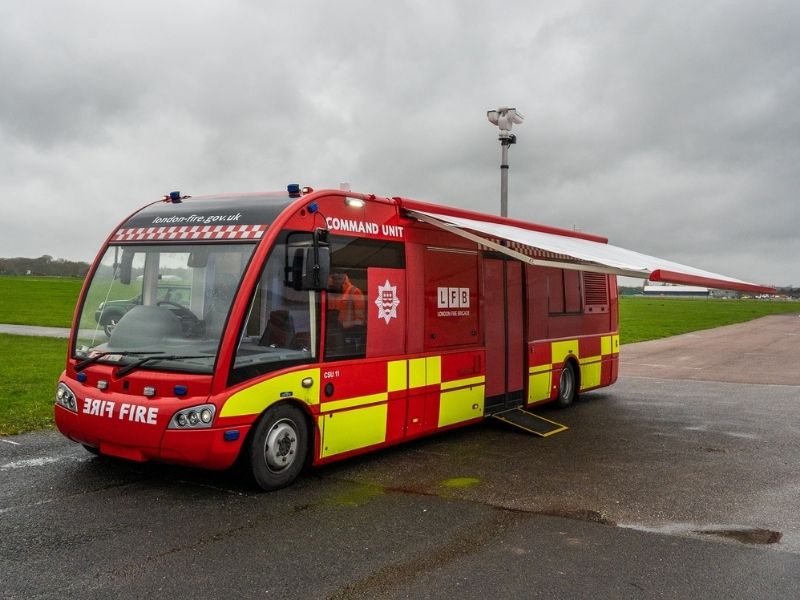What is a Command Unit?
Command Units are specialised vehicles equipped with a large working area, computers, and communications equipment. Each unit is staffed by at least two Sub Officers wearing red and white chequered tabards labelled ‘Command Support.’
What do they offer?
Our new generation Command Units were rolled out in late 2024. They are converted Optare solo single decker buses. They feature:
- An operating system that captures data from the incident and stores it in one place.
- A camera that can be used on the incident ground. The footage taken is streamed to the Command Unit.
- A mast mounted optical and thermal camera with pan, tilt and zoom.
- An external monitor protected by an awning. This allows briefings to be held outside, reducing the spread of contaminants.
- Battery powered ICT equipment. Generators are only used when the battery runs low. This reduces noise and air pollution from the vehicle.
When is a Command Unit needed?
A Command Unit is sent to incidents where there are three or more fire engines, or in situations that need extra command support, such as:
- reports of people at a fire
- presence of hazardous materials
If six or more fire engines are on site, at least one additional Command Unit will be sent.
What does a Command Unit do?
Command Unit Sub Officers provide support in four key areas:
- Operations: They assist Incident Commanders with the use of Command Unit functions and serve as the primary contact with other agencies.
- Communications: They monitor and manage radio communications from the incident ground and Control Room. They draft and send updates making sure everyone is informed of the latest developments, and coordinate with other emergency services and local authorities.
- Logistics: They act as the central hub for incident coordination for officers and staff from other agencies, help with relief plans, and anticipate resource needs.
- Planning Support and Information Management: They record and present information to support the Incident Commander, including topographical maps, timelines, and decision logs.


